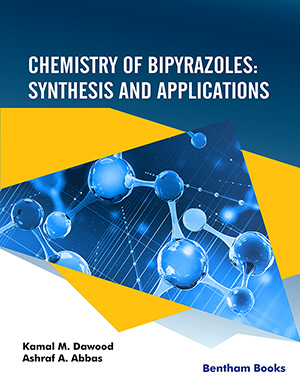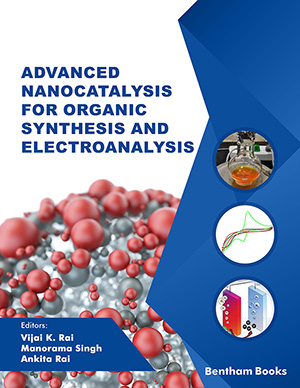
Abstract
D-amino acids are essential components of the bacterial cell wall and play notable roles in microbiology as regulators, for example in sporulation, biofilm formation or interspecies communication. Racemases are the specific enzymes catalyzing the interconversion of L-amino acids to D-amino acids. While most of racemases are mono-specific, a family of broad-spectrum racemases that can racemize ten of the 19 natural chiral amino acids has been recently reported. These enzymes can interconvert radically different residues such as aliphatic and positively charged residues producing non-canonical D-amino acids. Crystal structures together with bioinformatics allowed identification of the residues defining the molecular footprint in broad-spectrum racemases, the specific features of their active sites and the structural basis of their promiscuity. Here we review the recent knowledge on this family compared with the well established of alanine racemases. This structural information is a prerequisite for the development of novel drugs against the important human pathogens for which broadspectrum racemases play a key role.
Keywords: Non-canonical D-amino acids, racemases, bioinformatics; antibiotics resistance, X-ray crystallography.
Current Organic Chemistry
Title:Structural Bioinformatics in Broad-Spectrum Racemases: A New Path in Antimicrobial Research
Volume: 20 Issue: 11
Author(s): Noelia Bernardo-García, Pedro Sánchez-Murcia, Federico Gago, Felipe Cava and Juan A. Hermoso
Affiliation:
Keywords: Non-canonical D-amino acids, racemases, bioinformatics; antibiotics resistance, X-ray crystallography.
Abstract: D-amino acids are essential components of the bacterial cell wall and play notable roles in microbiology as regulators, for example in sporulation, biofilm formation or interspecies communication. Racemases are the specific enzymes catalyzing the interconversion of L-amino acids to D-amino acids. While most of racemases are mono-specific, a family of broad-spectrum racemases that can racemize ten of the 19 natural chiral amino acids has been recently reported. These enzymes can interconvert radically different residues such as aliphatic and positively charged residues producing non-canonical D-amino acids. Crystal structures together with bioinformatics allowed identification of the residues defining the molecular footprint in broad-spectrum racemases, the specific features of their active sites and the structural basis of their promiscuity. Here we review the recent knowledge on this family compared with the well established of alanine racemases. This structural information is a prerequisite for the development of novel drugs against the important human pathogens for which broadspectrum racemases play a key role.
Export Options
About this article
Cite this article as:
Bernardo-García Noelia, Sánchez-Murcia Pedro, Gago Federico, Cava Felipe and A. Hermoso Juan, Structural Bioinformatics in Broad-Spectrum Racemases: A New Path in Antimicrobial Research, Current Organic Chemistry 2016; 20 (11) . https://dx.doi.org/10.2174/1385272819666150810213115
| DOI https://dx.doi.org/10.2174/1385272819666150810213115 |
Print ISSN 1385-2728 |
| Publisher Name Bentham Science Publisher |
Online ISSN 1875-5348 |
Call for Papers in Thematic Issues
Advances of Heterocyclic Chemistry with Pesticide Activity
Global food safety and security will continue to be a global concern for the next 50 years and beyond. Plant diseases have had a significant impact on food safety and security throughout the entire food chain, from primary production to consumption. While conventional chemical pesticides have been traditionally used for ...read more
Carbohydrates conversion in biofuels and bioproducts
Biomass pretreatment, hydrolysis, and saccharification of carbohydrates, and sugars bioconversion in biofuels and bioproducts within a biorefinery framework. Carbohydrates derived from woody biomass, agricultural wastes, algae, sewage sludge, or any other lignocellulosic feedstock are included in this issue. Simulation, techno-economic analysis, and life cycle analysis of a biorefinery process are ...read more
Catalytic C-H bond activation as a tool for functionalization of heterocycles
The major topic is the functionalization of heterocycles through catalyzed C-H bond activation. The strategies based on C-H activation not only provide straightforward formation of C-C or C-X bonds but, more importantly, allow for the avoidance of pre-functionalization of one or two of the cross-coupling partners. The beneficial impact of ...read more
Cutting-edge technology for the development of electrochemical sensors
Electrochemistry based point of care diagnostics is a powerful tool which can revolutionize the current concept of personalize health care industry. There have been several efforts to amalgamate cutting edge technologies (nanotechnology, surface technology, anti-biofouling strategies) while developing assays. The success of each electrochemical sensor is very dependable upon how ...read more
Related Journals
 43
43 3
3 1
1 1
1
- Author Guidelines
- Graphical Abstracts
- Fabricating and Stating False Information
- Research Misconduct
- Post Publication Discussions and Corrections
- Publishing Ethics and Rectitude
- Increase Visibility of Your Article
- Archiving Policies
- Peer Review Workflow
- Order Your Article Before Print
- Promote Your Article
- Manuscript Transfer Facility
- Editorial Policies
- Allegations from Whistleblowers
- Announcements
Related Articles
-
Dangerous Liaisons between Beta-Amyloid and Cholinergic Neurotransmission
Current Pharmaceutical Design Nitric Oxide: Target for Therapeutic Strategies in Alzheimers Disease
Current Pharmaceutical Design University of Kentucky Sanders-Brown Healthy Brain Aging Volunteers: Donor Characteristics, Procedures and Neuropathology
Current Alzheimer Research Anticonvulsant Activity of New GABA Prodrugs
Medicinal Chemistry Synthesis and Anticonvulsant Activity Evaluation of Some 1-alkoxy-4-(1H- 1,2,4-triazol-1-yl)phthalazines
Letters in Drug Design & Discovery Integration of Internet of Things with Quantum Dots: A State-of-the-art of Medicine
Current Pharmaceutical Design Glutamate NMDA Receptor Antagonists with Relevance to Schizophrenia: A Review of Zebrafish Behavioral Studies
Current Neuropharmacology Therapeutic Potential of Metabotropic Glutamate Receptor Modulators
Current Neuropharmacology Involvement of Potassium and Chloride Channels and Other Transporters in Volume Regulation by Spermatozoa
Current Pharmaceutical Design Specialized Diet Therapies: Exploration for Improving Behavior in Autism Spectrum Disorder (ASD)
Current Medicinal Chemistry Kv7 Channels as Targets for the Treatment of Pain
Current Pharmaceutical Design Are Selenoproteins Important for the Cancer Protective Effects of Selenium?
Current Nutrition & Food Science The Language Development <i>Via</i> FOXP2 in Autism Spectrum Disorder: A Review
Current Pharmaceutical Design Treating Asthma as a Neuroelectrical Disorder
Inflammation & Allergy - Drug Targets (Discontinued) Glycoconjugates: Roles in Neural Diseases Caused by Exogenous Pathogens
CNS & Neurological Disorders - Drug Targets Transdermal Nutraceuticals Delivery System for CNS Disease
CNS & Neurological Disorders - Drug Targets The Impact of Spironolactone Co-administration on Cyclosporin Initial Dosage Optimization for Pediatric Refractory Nephrotic Syndrome
Current Pharmaceutical Design Stopping Drug Therapy in Epilepsy
Current Pharmaceutical Design Editorial (Thematic Selection: Special Issue on Metabotropic Glutamate Receptors)
Current Neuropharmacology Programming Apoptosis and Autophagy with Novel Approaches for Diabetes Mellitus
Current Neurovascular Research























